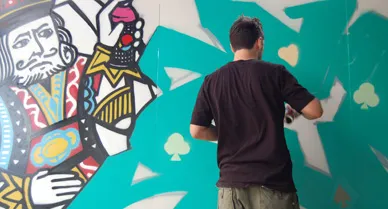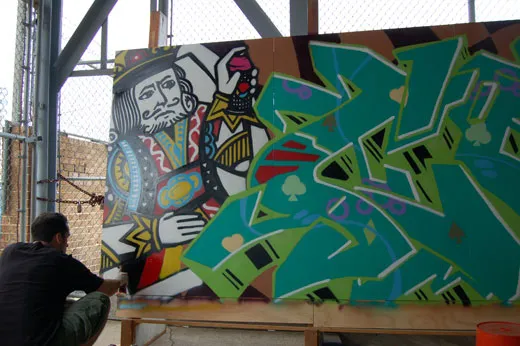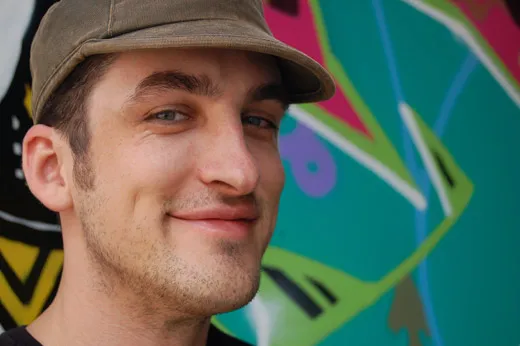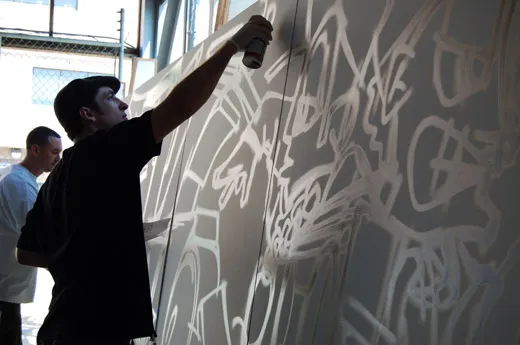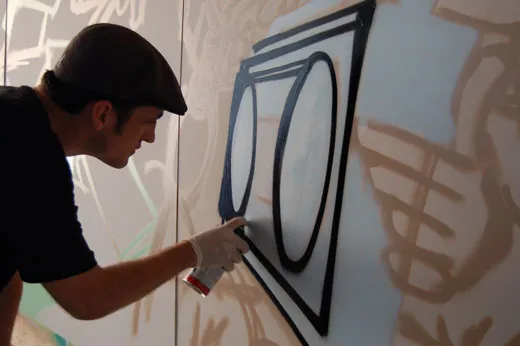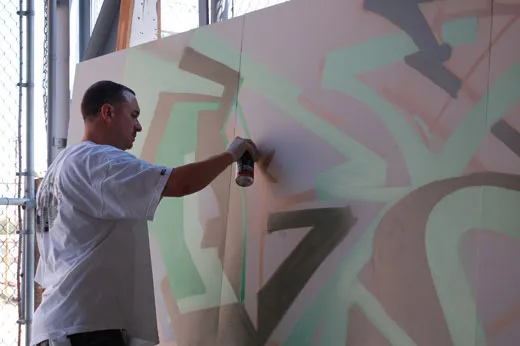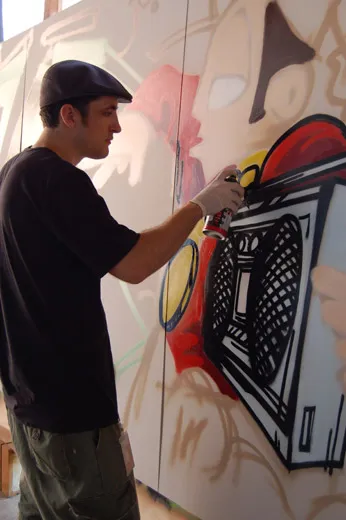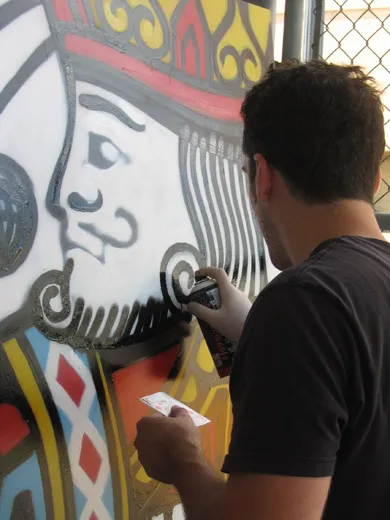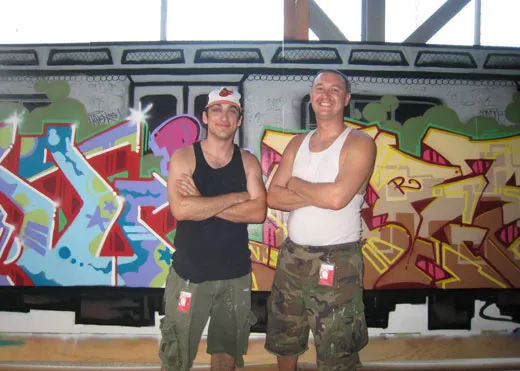Aerosol Art
Largely dismissed as vandalism, graffiti migrates from city streets and subway cars into major galleries
While browsing the National Portrait Gallery this month, visitors initially might think that the museum walls have been defaced. But the four-foot-long graffiti murals that cover the corridors are actually part of "Recognize! Hip Hop and Contemporary Portraiture," marking the Smithsonian's first commission of the underground street art—still widely regarded as vandalism. "We are not glorifying the illegal activity, but we are acknowledging the larger impact this street tradition has had in contemporary art," says Frank H. Goodyear III, one of the exhibition's curators.
When planning the exhibit—which features photography, paintings and videos influenced by hip-hop—curators saw a barren corridor as an opportunity to feature one of hip-hop culture's most characteristic staples: graffiti writing. Since museum officials were hesitant about artists spraying paint directly onto the gallery walls, the works were instead executed off-site by two local artists, Tim "Con" Conlon, 33, of Washington, D.C. and Dave "Arek" Hupp, 34, from Baltimore, who have both been spray-painting (or "tagging") trains and bridges since they were teenagers. They boast quite the portfolio of street graffiti, or what Goodyear euphemistically calls their "noncommissioned works." Hupp estimates that in his peak he tagged about 400 freight trains a year, and Conlon's signature pieces, many of which feature TV's "Simpsons" characters, can be seen around the country. In fact, their street art has gone commercial, with companies such as Coca-Cola and Delta Airlines recruiting them for advertising campaigns to target the youth demographic. Even Maisto International, a die-cast toy company, had the two artists tag model trains last year. "People who think it is just vandalism are amazed when they see what we can do with spray paint," Hupp says.
This is the first major gallery work for either artist. The four panels, which were completed this past summer, depict the traditional style of graffiti from its roots in 1970s New York City, when distorted letters and bright colors dominated. A subway car is the backdrop for one of the murals, and the other three pop with stylized letters that form the words "Con," "Arek" and "Recognize."
The public's view of graffiti has come a long way since Ed Koch, then New York City mayor, suggested combating graffiti artists by releasing wolves into the subway storage yards. Starting in the 1980s, spray paintings migrated into major galleries. The Brooklyn Museum exhibited 20 large-scale graffiti paintings in 2006. But displaying the work in a Smithsonian museum represents "an important step," says Tumelo Mosaka, the associate curator for exhibits at the Brooklyn Museum. "It's a recognition that cultural expression can exist outside conventional canons." Goodyear explains that graffiti's influence on modern art justifies its display. For the past 30 years, contemporary artists, like California-based muralist Brett Cook and Brooklyn-based painter Shinique Smith, have used what Goodyear calls a "hip-hop aesthetic," in which they borrow the vibrant colors, thick outlines and contorted letter shapes of street art and translate it to canvas.
Additionally, Jobyl Boone, a graduate student and the exhibit's guest curator, explains that graffiti tags function as self-portraits. "We want to present the notion that individuality and portraiture might not be someone's face or body," she says. Conlon agrees: "Graffiti is based on choosing a name and making it as prolific as possible."
